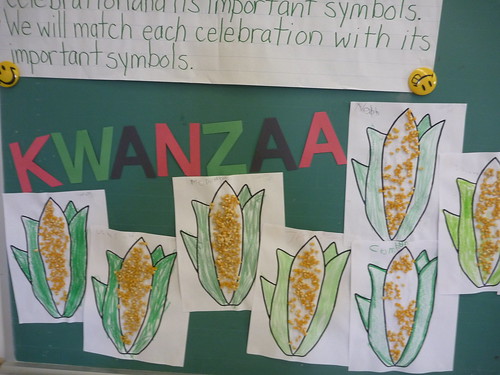All About Kwanzaa, Including Its History and Traditions
Kwanzaa #Kwanzaa

Kwanzaa is a celebration of African and African American culture. The annual week-long December holiday will be here before you know it, so it’s the perfect time to get to know the history and symbolism behind the traditions.
What is Kwanzaa?
Kwanzaa is an annual holiday celebrating African American and pan-African culture, community and families.
During Kwanzaa, celebrants honor the Nguzo Saba, or Seven Principles, of their culture: Umoja (unity), Kujichagulia (self-determination), Ujima (collective work and responsibility), Ujamaa (cooperative economics), Nia (purpose), Kuumba (creativity) and Imani (faith).
Related: Habari Gani? Celebrate Kwanzaa with Senegalese Chicken Thighs with Red Palm and Coconut Rice by Pierre Thiam
Who founded Kwanzaa?
Activist, author and African studies professor Dr. Maulana Karenga created Kwanzaa. The holiday was an extension of his work with Hakim Jamal in The Organization Us, which focused on promoting the seven principles (Nguzo Saba) on a national level. Dr. Karenga also sought to give the Black community an alternative winter holiday to Christmas so they could celebrate their own culture, people and principles, and not those of a predominantly white community.
When was Kwanzaa first celebrated?
Dr. Karenga created Kwanzaa in 1966—57 years ago!
What does the name “Kwanzaa” mean?
The name “Kwanzaa,” as well as its spelling, are significant. In Kwanzaa: Black Power and the Making of the African-American Holiday Tradition, author Keith A. Mayes writes that Dr. Karenga was inspired by the Swahili phrase “matunda ya kwanza,” which means “first fruits of the harvest.” “Kwanza” means “first.” Dr. Karenga added an extra “a” at the end of “Kwanzaa” because seven children were part of The Organization Us, and he wanted each child represented with a letter in the holiday’s name.
When is Kwanzaa?
Kwanzaa is celebrated from Dec. 26 to Jan. 1 each year. That means that this year, Kwanzaa starts on Tuesday, December 26, 2023, and ends on Monday, January 1, 2024.
How many days is Kwanzaa?
Kwanzaa spans seven days each year, with one day to celebrate each of the seven principles of Nguzo Saba.
Related: Black People Are Facing a Unique Mental Health Struggle Right Now—Here’s What to Know About It
How do I celebrate Kwanzaa?
Kwanzaa celebrations vary by community. That said, Kwanzaa is often celebrated with art of various kinds, including poetry, music, dance and spoken-word narratives to honor the Nguzo Saba.
According to Dr. Karenga, a traditional Kwanzaa celebration procedure consists of the following:
1. Choose a central place in the home for the Kwanzaa Set.
2. Prepare a table with an African cloth.
3. Place a mat, called mkeka, down, and place the rest of the Kwanzaa symbols on or alongside it.
4. Place the Kinara (candleholder) on the mat and the Mishumaa Saba (seven candles) within it. The black candle, representing Umoja (unity), is placed in the center and lit on the first day of Kwanzaa, to represent that people come first. Red candles, representing Kujichagulia (self-determination), Ujamaa (cooperative economics) and Kumma (creativity) are placed to the left of the black candle. Green candles representing Ujima (collective work and responsibility), Nia (purpose) and Imani (faith) are placed to the right of the black candle.
5. The candles are lit from left to right on the remaining six days of Kwanzaa. Red candles are lit after the black to symbolize the struggle of the Black community, and the green candles are lit last to represent the hope coming from the struggle.
Related: North African Chickpea Soup
What are proper Kwanzaa greetings?
Kwanzaa creator Dr. Karenga says that Kwanzaa greetings are in Swahili and used to affirm and reaffirm the Seven Principles. On each respective day of Kwanzaa, it’s common to say “Habari gani?” and respond with that day’s principle (“Ujoma,” “Kujichagulia,” etc.).
Do you give gifts for Kwanzaa?
Gifts for Kwanzaa are typically given to children. Kwanzaa gifts must include a book and a heritage symbol, according to Dr. Karenga, to emphasize the tradition of and commitment to learning history.
Next, check out these amazing and moving African proverbs.